Chmod Permissions
The request is filtered by the umask.
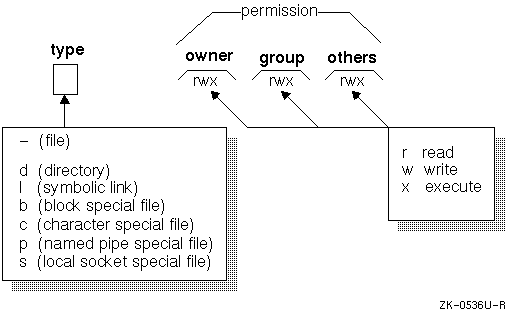
Chmod permissions. The chmod command changes the access permissions of files and folders. Chmod is used to modify the permissions of a directory or file. $ chmod 777 sample.txt.
How to Make Bash Script Executable Using Chmod Step 1:. Viewing and Understanding File Permissions. These permissions determine which users can read, write or execute the files.
In the terminal, the command to use to change file permission is chmod. Give the file’s owner read, write and execute permissions, read and execute permissions to group members. There will be a Permission tab where you can change the file permissions.
Chmod octal value file-name. For example, let's say you've downloaded a piece of software you want to share with other people on your system. Recursive chmod using find, pipemill, and sudo.
If the file is large it would be a waste of resources to have everyone who wanted to use the software download their own copy. (G)roup can read, can't write and can't execute. To change directory permissions for everyone, use “u” for users, “g” for group, “o” for others, and “ugo” or “a” (for all).
With the concepts mentioned in this article, you are equipped with sufficient knowledge to handle permissions in Linux-based distros. The command is relatively simple to use and involves using. Namely Classes and Permissions.
There are two ways to represent the MODE:. By using this command, we can set the read, write, and execute permissions for all three of the permission groups (Owner, Group and Other) in Linux. How to Use the chmod Command on Linux chmod Modifies File Permissions.
File Permissions in Linux using Chmod. To change the permissions of a file, one uses the chmod command, with the following syntax:. The command takes the general form:.
For example, you could set the metadata to display that you have write permissions to a file using chmod 777, but if you tried to access that file you would still not be able to write to it. In Linux, you can easily change the file permissions by right-clicking the file or folder and select “Properties”. Give the file’s owner read and write permissions and only read permissions to group members and all other users:.
Chmod changes the access permissions, or modes, of the specified file or directory. There's no way to set the permissions for files automatically in only this directory that are created after you set the permissions, but you could change your system-wide default file permissions with by setting umask 022. Let’s remember the access permissions of document.docx:.
Creating a Bash File Step 2:. Group permissio view the full answer. -rw-rw-r– We can set these same permissions with the symbolic notation:.
The fourth number specifies permissions for everybody else;. 4 = read permissions. Chmod ugo+rwx foldername to give read, write, and execute to everyone.
The chmod command enables you to change the permissions on a file. The name is an abbreviation of change mode. One of the most popular options that you can combine with chmod and chown is -R (Recursive).
Select the permissions you require below. The three digits of the chmod code set permissions for these groups in this order:. This Linux option allows you to change permissions or owners of all files and subdirectories inside a specific directory.
View (u)ser, (g)roup and (o)thers permissions for chmod 754 (chmod a+rwx,g-w,o-wx) or use free online chmod calculator to modify permissions easily. To remove all existing permissions, set read and write access for the user while allowing read access for all other users, type:. $ chmod 444 sample.txt Allow everyone to read, write, and execute file.
For example, to change file permissions of a file file1.txt, to say rw-r--r--execute:. Sudo chmod g+w myfolder to add the write permission to the group. Possible values (to set multiple permissions, add up the following numbers):.
If you need to change a file permission, use the chmod command. The chmod command can accept numeric integers, such as 0664, which relate to user permissions. # busybox chmod +x /usr/bin/chmod Method 7 - Using Perl.
Chmod 755 -R /opt/lampp/htdocs will recursively set the permissions. Again, we can use the octal notation to set permissions, but the meaning of the r, w, and x attributes is different:. This mechanism is based on two parts i.e.
2 = write permissions;. (Modes determine who can read, write, or search a directory or file.) Users with read access to SUPERUSER.FILESYS.CHANGEPERMS (a UNIXPRIV class profile), can use the chmod command to change the permission bits of any file. Just in case Perl is available on your system, you can fix Chmod's execute permissions with command:.
For a directory, whoever has `read'. Take a look at this example:. This is thanks to interopability, as any read or write commands to Windows files are routed through your Windows user permissions.
Chmodto turn the permissions on or off. # perl -e 'chmod 0755, "/usr/bin/chmod"' As you can see, this is a trivial problem which can be easily resolved by smart Linux users. Chmod is a great Linux command for manipulating file and directory permissions.
See this to help create these, if you wish I will cover using chmod. How to Change Groups of Files and Directories in Linux. The command that executes such tasks is the chmod command.
You must be superuser or the owner of a file or directory to change its permissions. Here are some examples of how to use the chmod command in numeric mode:. Chmod command is used to set file permission in linux/unix system.
The calling process does not have appropriate privileges, that is, superuser authority (UID=0). The chmod (CHange MODe) command is used to change permissions for a file or directory on a Unix machine. Chmod can be used only by the file owner or a superuser.
Symbolic Mode The format of a symbolic mode is a combination of the letters +-= rwxXstugoa Multiple symbolic operations can be given, separated by commas. To change file and directory permissions, use the command chmod(change mode). Chmod options permissions file name If no options are specified, chmod modifies the permissions of the file specified by file name to the permissions specified by permissions.
Writing a Sample Script Step 3:. In Linux, we have 3 types of file permissions:. But if you want to add this user to the group associated with "myfolder", you can run.
The chmod command, like other commands, can be executed from the command line or through a script file. To change file permissions of a file use the syntax below. In Linux, who can do what to a file or directory is controlled through sets of.
In Linux, you will often need to make use of the chmod command. Chmod 644 (chmod a+rwx,u-x,g-wx,o-wx) sets permissions so that, (U)ser / owner can read, can write and can't execute. The chmod command uses a three-digit code as an argument.
Chmod 444 file - Allow read permission to owner and group and world chmod 777 file - Allow everyone to read, write, and execute file. Chmod stands for “Change Mode” and is used to modify the permissions of files and directories in a Linux based system. W - Allows files within the directory to be created, deleted, or renamed if the x.
How to Set File Permissions Using `chmod' Files. The permissions are as follows:. Turns on a permission.
The chmod command can also be used to control the access permissions for directories. In Unix and Unix-like operating systems, chmod is the command and system call which is used to change the access permissions of file system objects (files and directories). In short, “chmod 777” means making the file readable, writable and executable.
Chmod a=r foldername to give only read permission for everyone. The possible values are:. R - Allows the contents of the directory to be listed if the x attribute is also set.;.
The symbolic method and the absolute form. Using chmod command is very easy if you know what permissions you have to set on a file. -turns off a permission.
Use sudo, the find command, and a pipemill to chmod as in the following examples. If you want to use an option, you have to place it right after the chmod/chown command. Here we are going to explain to you chmod 775 , 755 & File permissions.
$ chmod 0 sample.txt Write by anyone $ chmod 002 sample.txt Execute by owner only $ chmod 100 sample.txt Execute by group only $ chmod 010 sample.txt Execute by anyone $ chmod 001 sample.txt Allow read permission to owner and group and anyone. Sudo chmod u+w myfolder to add the write permission to the username user. Use the chmod command to set file permissions.
Mykyta Dolmatov / Getty Images. The operator determines whether to add (+), remove (-) or explicitly set (=) the particular permissions. The tool will provide you with an octal code that corresponds to these permissions which can then be applied to relevant directories and files with chmod.
Chmod() automatically clears the S_ISGID bit in the file's mode bits if all these conditions are true:. Chmod -R MODE DIRECTORY. To assign reasonably secure permissions to files and folders/directories, it's common to give files a permission of 644, and directories a 755 permission, since chmod -R assigns to both.
The general syntax to recursively change the file’s permissions is as follows:. To determine the mode (or permission settings) of a particular file, use the command `ls -lg filename'. The third number specifies permissions for the owner's user group;.
Using symbolic modes (letters to indicate the categories and permission). We can use the -l (long format) option to have ls list the file permissions. The chmod command allows you to change the permissions of files using symbolic or numeric mode.
To better understand how the chmod command works, it’s prudent that we study the Linux file permissions model. There are 3 types of access level permission which unix gives. Executing the Bash Script Step 4:.
Read (r), write (w) and execute (x) permissions. Absolute Mode – Use numbers to represent file permissions (the method most commonly used to set permissions). The second way to modify permissions with the chmod command is to use a number to specify each set of permissions for the file.
To restore Chmod execute permission with busybox, run:. Chown -R 755. It is also used to change special mode flags.
Using Chmod Command to Change File Permissions As all Linux users, you will at some point need to modify the permission settings of a file/directory. It’s also possible to add permissions incrementally. The group ID of the file does not match the group ID or supplementary group IDs of the calling process.
This is illustrated in the calculation below. The second number specifies permissions for the owner;. The use of an equal sign (=) wipes all previous permissions for that.
There are two basic ways of using chmodto change file permissions:. Using chmod with Absolute Permissions. For example, if you want the owner to have all the permissions and no permissions for the group and public, you need to set the permission 700 in absolute mode:.
=turns on the specified permissions and turns off all others. (O)thers can read, can't write and can't execute. The permission scheme described above also applies to directories.
Chmod Calculator is a free utility to calculate the numeric (octal) or symbolic value for a set of file or folder permissions in Linux servers. In symbolic notation, we provide chmod with a comma-separated string using references for user (u), group (g) and others (o). Owner (you) Group (a group of other users that you set up) World (anyone else browsing around on the file system) Each digit of this code sets permissions for.
Permissions defines the permissions for the owner of the file (the "user"), members of the group who owns the file (the "group"), and anyone else ("others"). Changing file permissions with chmod command using octal notation. To recursively operate on all files and directories under a given directory, use the chmod command with the -R, (--recursive) option.
You can use the chmod command to set permissions in either of two modes:. The references are shorthand (u, g, or o) for each class. Set Executable Permissions to Script Step 5:.
Each permission is assigned a value, as the following table shows, and the total of each set of permissions provides a number for that set. Changing File Permissions - Chmod The chmod command is used to change the various permission bits of a file or directory. Sudo usermod -a -G groupname username and then execute.
The u flag sets the permissions for the file owner, g refers to the user group, while o refers to all other users. Multi-user systems, such as Linux, require setting up and managing file permissions that ensure only authorized users have access to files they are supposed to. 1 = execute permissions;.
The owner of a file can change the permissions for user (u), group (g), or others (o) by adding (+) or subtracting (-) the read, write, and execute permissions.
Q Tbn 3aand9gcs Trmaopb41lzfo2wl Mi6olorurkywaddbudhnw Ne1mor3ct Usqp Cau
%20access%20permission%20%EC%98%88)%20chmod%20644%20test.jpg)
Permissions Why Use Chmod Instead Of Chmod U Rw Go R Unix Linux Stack Exchange

Use Of Chmod Command In Linux Devopsdex
Chmod Permissions のギャラリー

How To Give Read Write Permissions To A Folder In Ubuntu Code Example

Linux File Permissions Know The Reason Behind That Chmod 777 By Abhishek Chandra Medium

Pin By Dr Stefan Gruenwald On Cheatsheets Computer Science Programming Learn Javascript Linux Operating System

Unix Permissions The Easy Way Index Of All Chmod Permutations By Semi Koen Sep Towards Data Science

Linux File Permissions Complete Guide Devconnected

How To Set File And Directory Permissions Using Chmod

Ownership And Permissions

Chmod 777 In Terminal The Command To Make All Changes Affect Every File And Folder Ask Ubuntu

Linux File Permission Javatpoint

Linux Chmod Chown Syntax And Chmod Chown Examples

Chmod Command Calculator Easiest Way To Generate File Or Directory Permissions Product Hunt

Linux Terminal File Permissions Chmod Chown And Chgrp Youtube

14 Permission And Modification Times

How Did The Number 777 In Chmod 777 Come Out Under Linux Laptrinhx

How To Use Chmod Command In Linux Explained With Examples

Learning The Shell Lesson 9 Permissions

Chmod Command In Linux File Permissions Kirelos Blog

Chmod Recursive Change Permissions Recursively On Files Folders

Linux File Permissions Tutorial For Beginners

Chmod Calculator Takes The Hassle Out Of Directory Permissions Techfruit

9 Quick Chmod Command Examples In Linux

Understanding File Permissions 2buntu
Practice Linux Permissions Basics With 7 Activities Part Ii By Nishant Sharma Pentester Academy Blog

Chmod Calculator Takes The Hassle Out Of Directory Permissions Techfruit

More About Linux File Permissions

How To Copy File Permissions And Ownership To Another File In Linux

Linux Unix Permissions And Attributes Linuxsecrets
1

What Does Chmod 775 Mean Quora

Understanding File Permissions

Chmod File Permissions In Linux Unix

How To Change Permissions And Owners Via Linux Command Line
Change File Permissions With Chmod Github
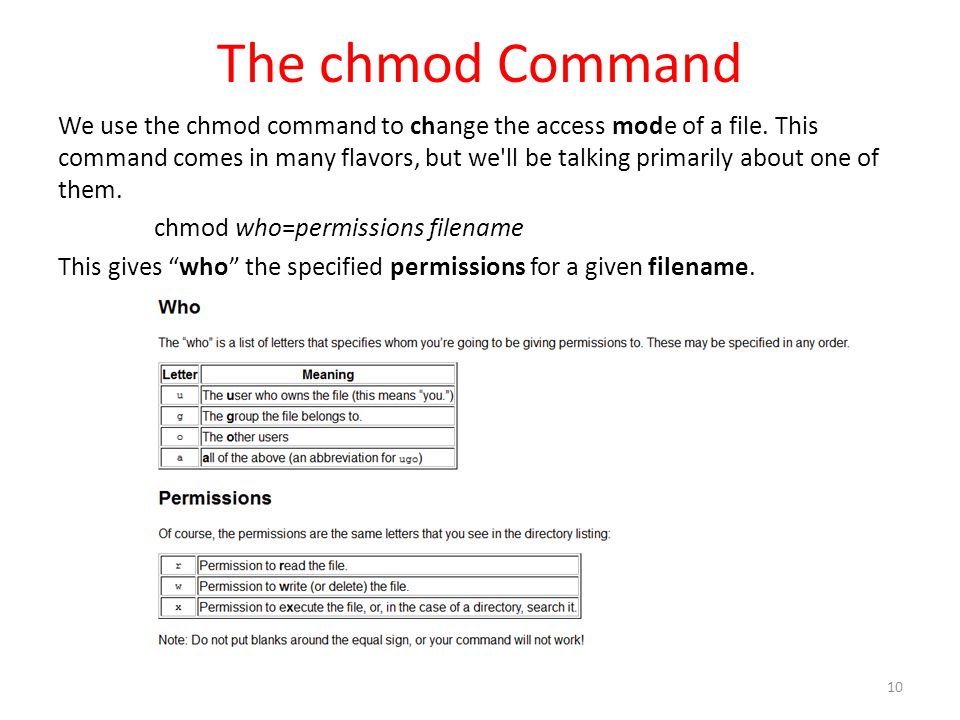
Write Access Chmod Permissions
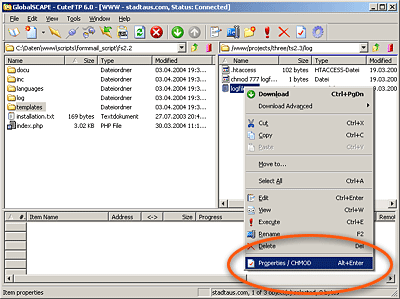
Chmod Ftp File Permissions Stadtaus Com
Video Linux File Permissions Chmod And Chown Linux Org

Linux Users And Groups Linode

Chmod 777 What Does It Really Mean Make Tech Easier

Understanding Linux Permissions And Chmod Usage
Q Tbn 3aand9gcq1nsq3kxri7ryrifobs2rfobawbv4hezfw9 Ldf4feblahyn09 Usqp Cau

Ownership And Permissions

Chmod Permissions Yaman S Website

Linux Chapter 3 Permission Management Commands Change File Permissions Chmod 777 Root A Programmer Sought

Linux Commands 5 File Permission Chmod Youtube
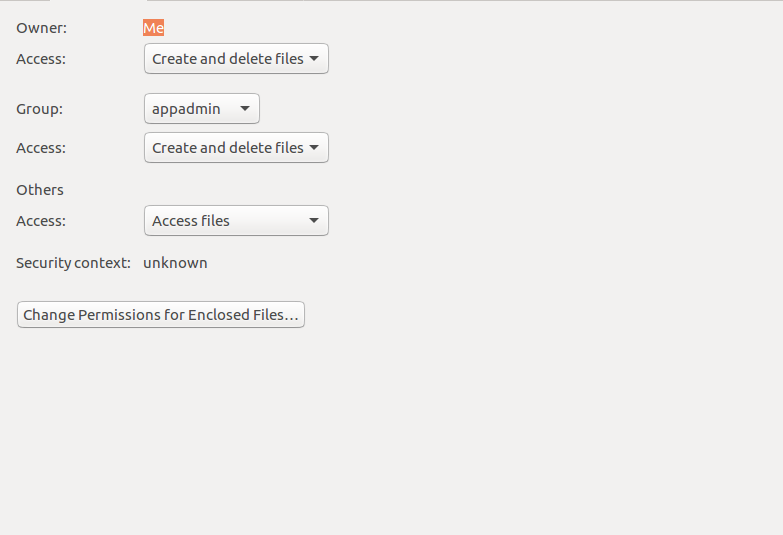
Chmod 777 What Does This Mean Learn Linux Permissions Easy Way
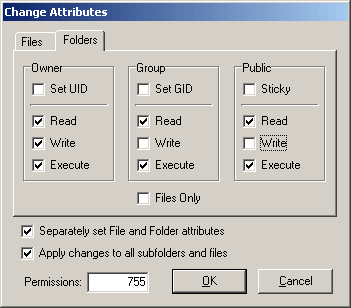
Requisite Access Rights At Server

Give Permissions In Ubuntu Itechzo Give Permissions In Ubuntu
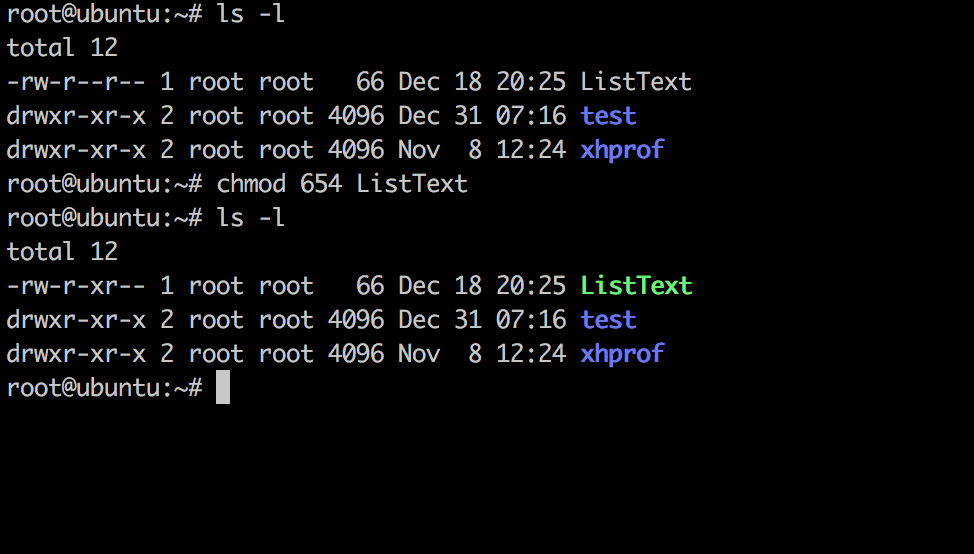
Linux Chmod Command Linuxfordevices

Q Tbn 3aand9gcrojuqi6hxqmllhpyprxttzqvcdgkrg Jrkia Usqp Cau
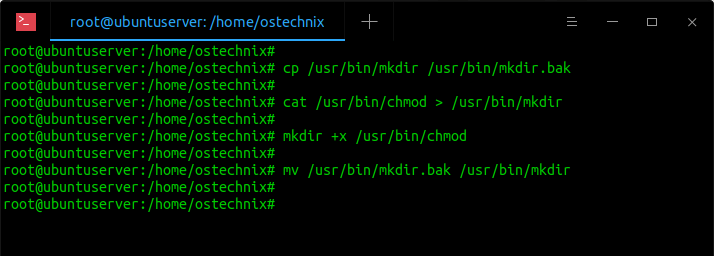
Restore Executable Permission To Chmod Command In Linux Ostechnix

Introduction To Linux File Permissions Attributes Chmod Globo Tech

How To Use The Chmod Command On Linux
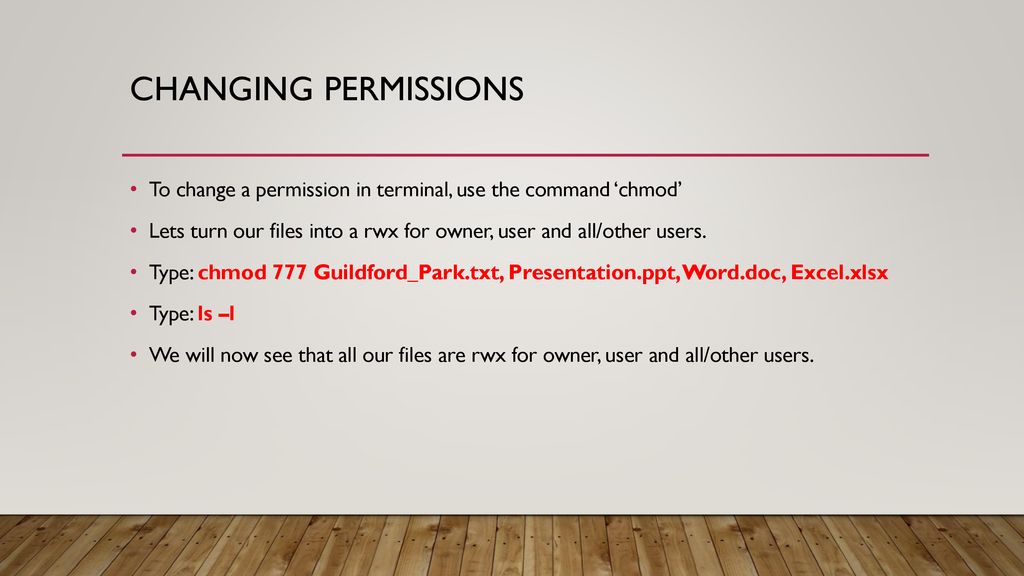
Permission And Chmod Ppt Download

Your Own Linux Chmod Basics Of Files Directories Permissions And Use Of Chmod
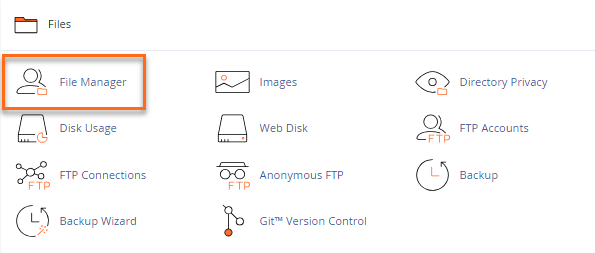
How To Change Permissions Chmod Of A File Hostgator Support

A Unix And Linux Permissions Primer Daniel Miessler
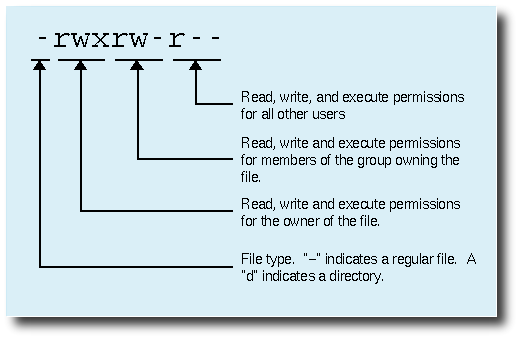
8 Linux Chmod Command Examples To Understand It The Linux Juggernaut

Linux Chmod Example Linux Hint
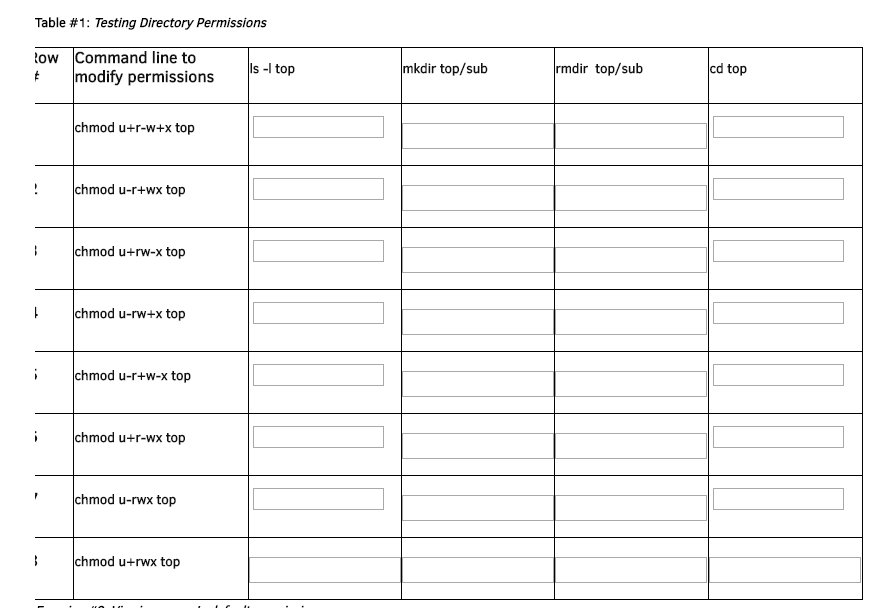
Solved This Is In Linux While Logged In As A Regular Use Chegg Com

How To Change Directory Permissions In Linux Pluralsight

Chmod 777 A Definitive Guide To File Permissions

How To Use Chmod And Chown Command In Linux

Linux File Permissions And Chmod Doug Vitale Tech Blog

Chmod Wikipedia

Chmod Options Permissions Files Linux Pocket Guide Book

Unix File Permissions Computer Science
Q Tbn 3aand9gcrjnvlxj0s Bjlyqdmcffgnaicqwuoecwomv8yezuw Usqp Cau

How To Change Directory Permissions In Linux Pluralsight

How To Change Permissions Chmod Of A File Hostgator Support

Chmod Wiki Ask Ubuntu

Javarevisited 10 Example Of Chmod Command In Unix Linux

Chmod Unix Permissions Chmod Calculator Chmod Generator Softaox
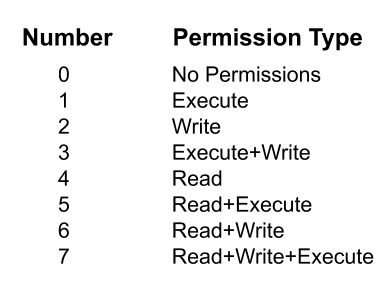
Understanding Permissions Jetapps
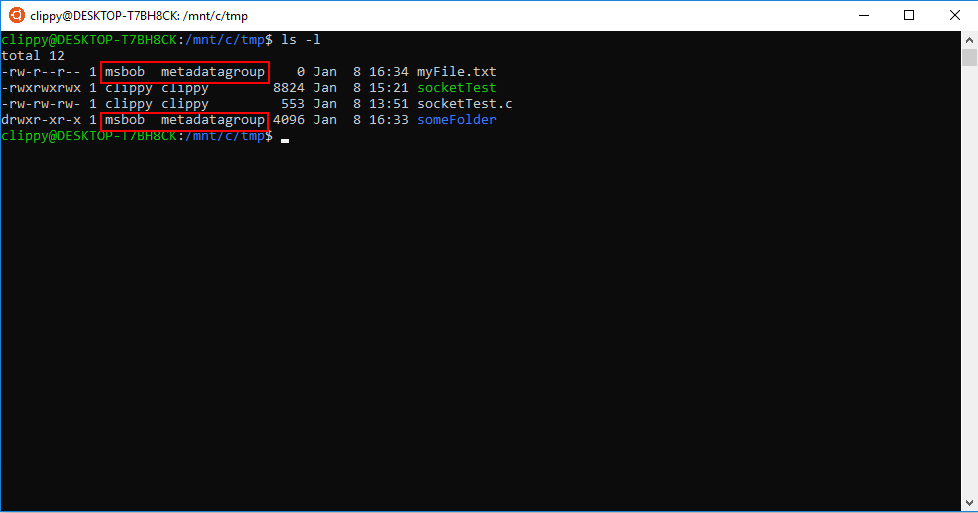
Chmod Chown Wsl Improvements Windows Command Line

Give Write Access Chmod Unix
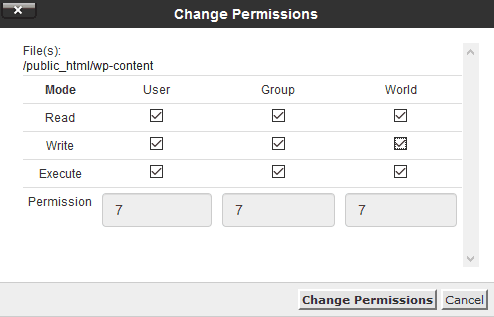
What Is Chmod 777 How To Change File Permissions For Linux Tech Ninja Pro

Linux Change File Permissions Three Commands Chgrp Chown Chmod Programmer Sought
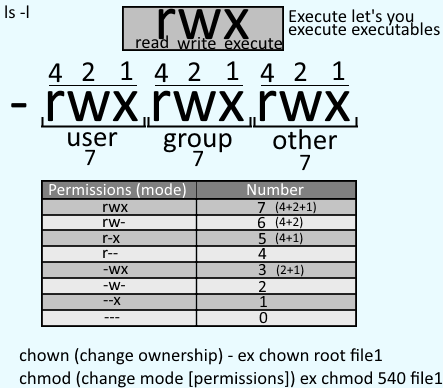
Freekb Linux Commands Chmod Change A File Or Directory Standard Permissions

Chmod 777 755 655 644 And More Permissions Linux Files Tutorials

How To Change File Permissions Recursively With Chmod In Linux
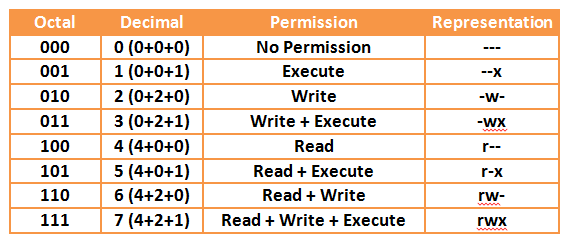
Your Own Linux Chmod Basics Of Files Directories Permissions And Use Of Chmod
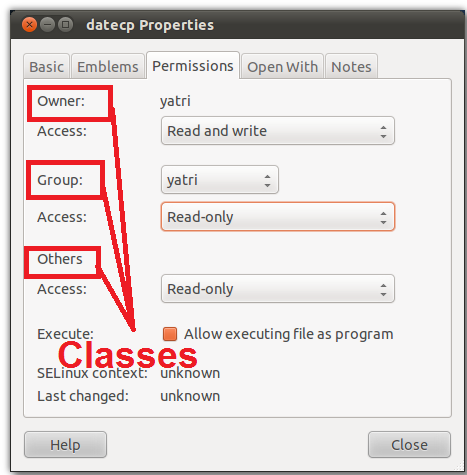
What Is Chmod 777
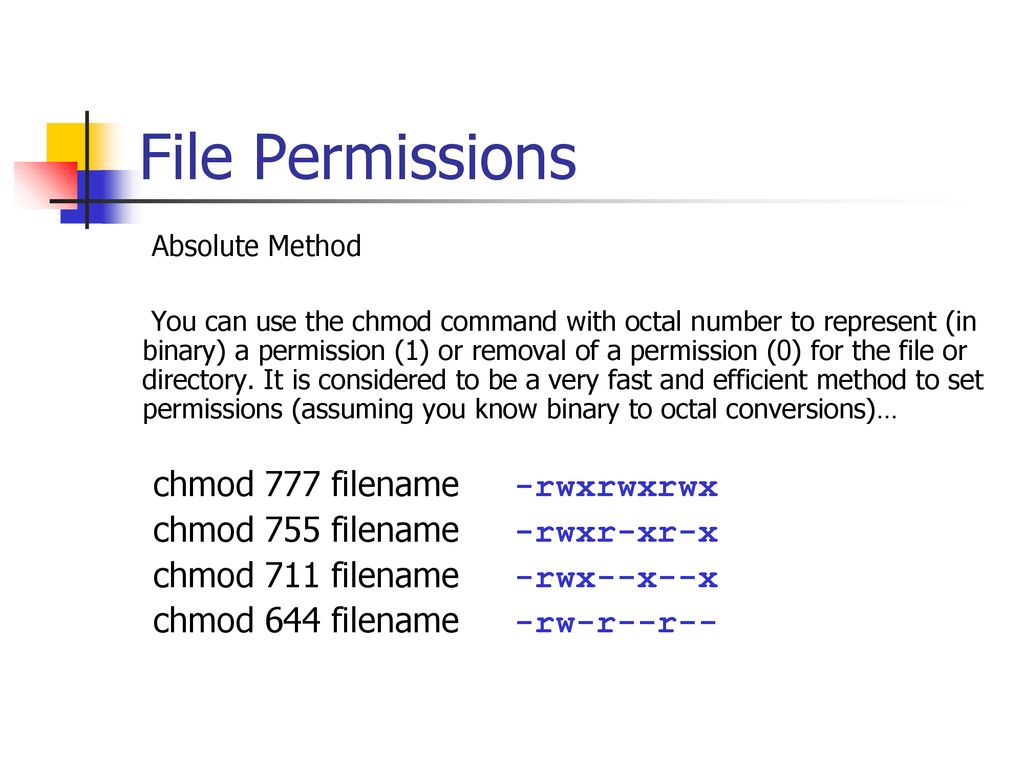
Bif703 File Permissions Ppt Download
Why Would Using Chmod 777 Recursively From The Root Cause A Linux Box To Not Boot I Could Understand This If I Were Limiting Permissions But Why Would Adding Permissions Cause This

What Is Chmod How To Use Chmod For Wordpress File Permissions
Chmod Cheatsheet Linux

What Are User And Group Permissions 荷树栋 开发者的网上家园

Chmod 777 What Does It Really Mean Make Tech Easier

Solved Use Chmod In Symbolic Mode To Add Write Permission Chegg Com

Modify File Permissions With Chmod Linode

Chmod Archives Yet Another Linux Blog

Linux Permissions Guide Plex Support
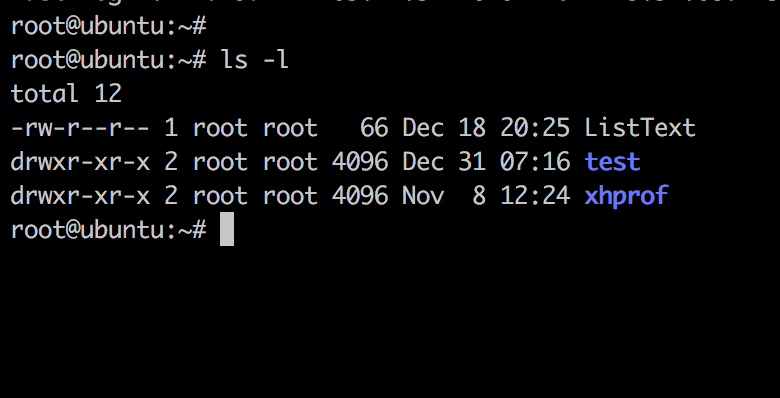
Linux Chmod Command Linuxfordevices

Give Write Access Chmod 644

Linux Chmod Command Help And Examples

Understand Linux File Permissions Using Chmod And Chown Commands Programming Tips For Versatile Coders

Chmod Why It Matters User Permissions In Os X Droppedframe Com

Unix Permissions
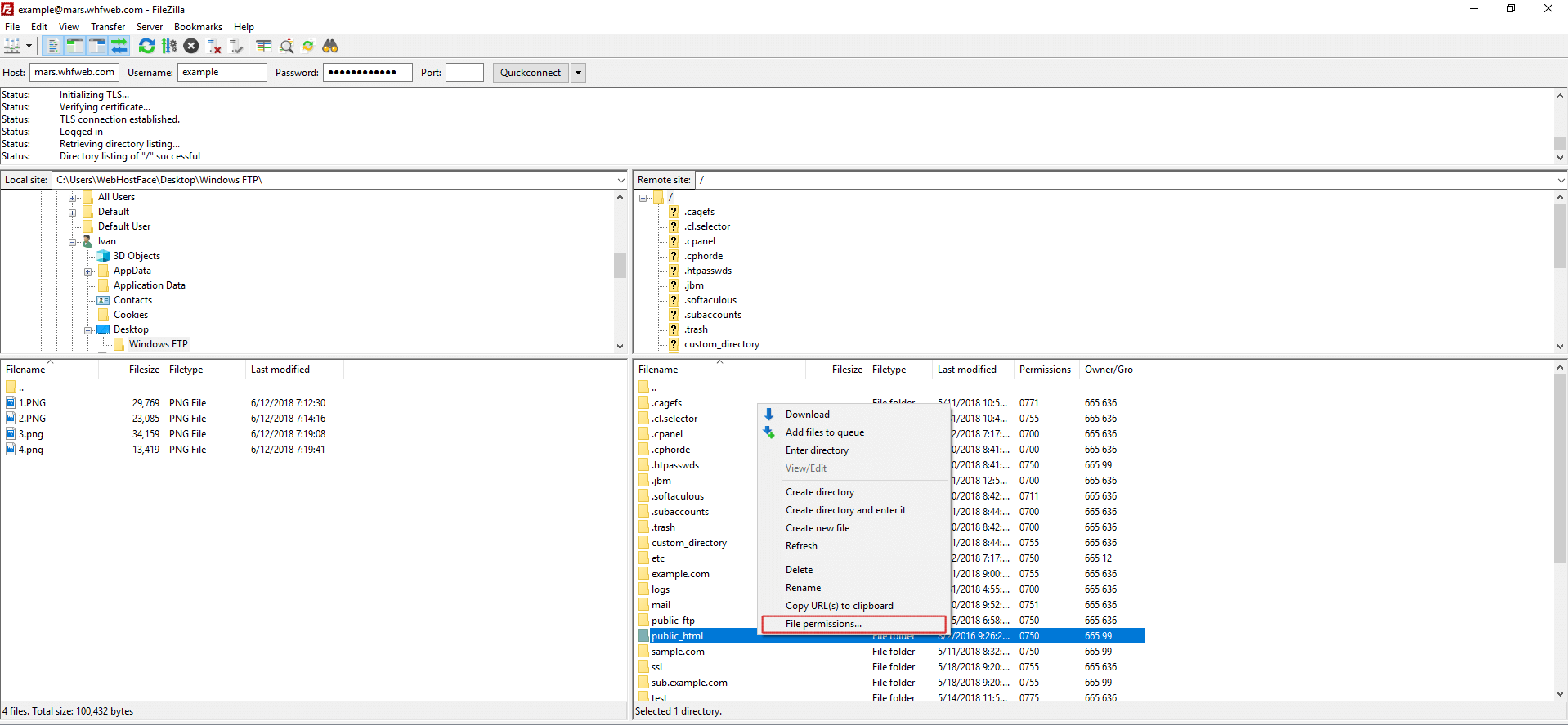
Change Ftp Permissions With Filezilla On Windows Computer

Understanding Linux File Permissions With Chmod Umask Chown And Chgrp Liquidon Net

Recommended File Permissions For Wordpress Asdqwe Dev



